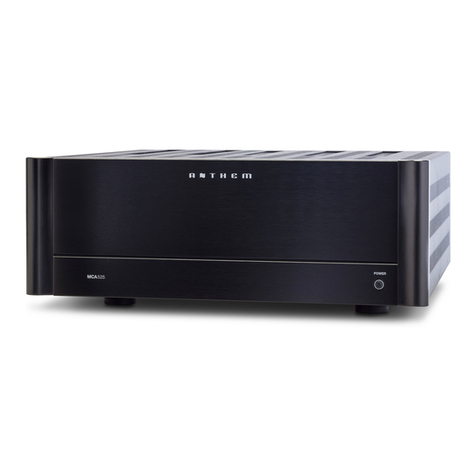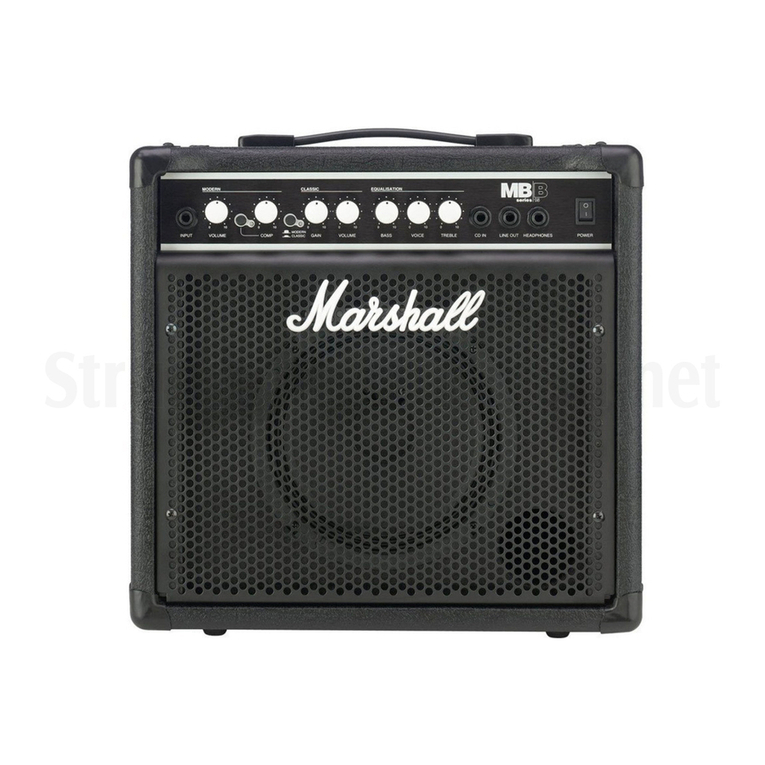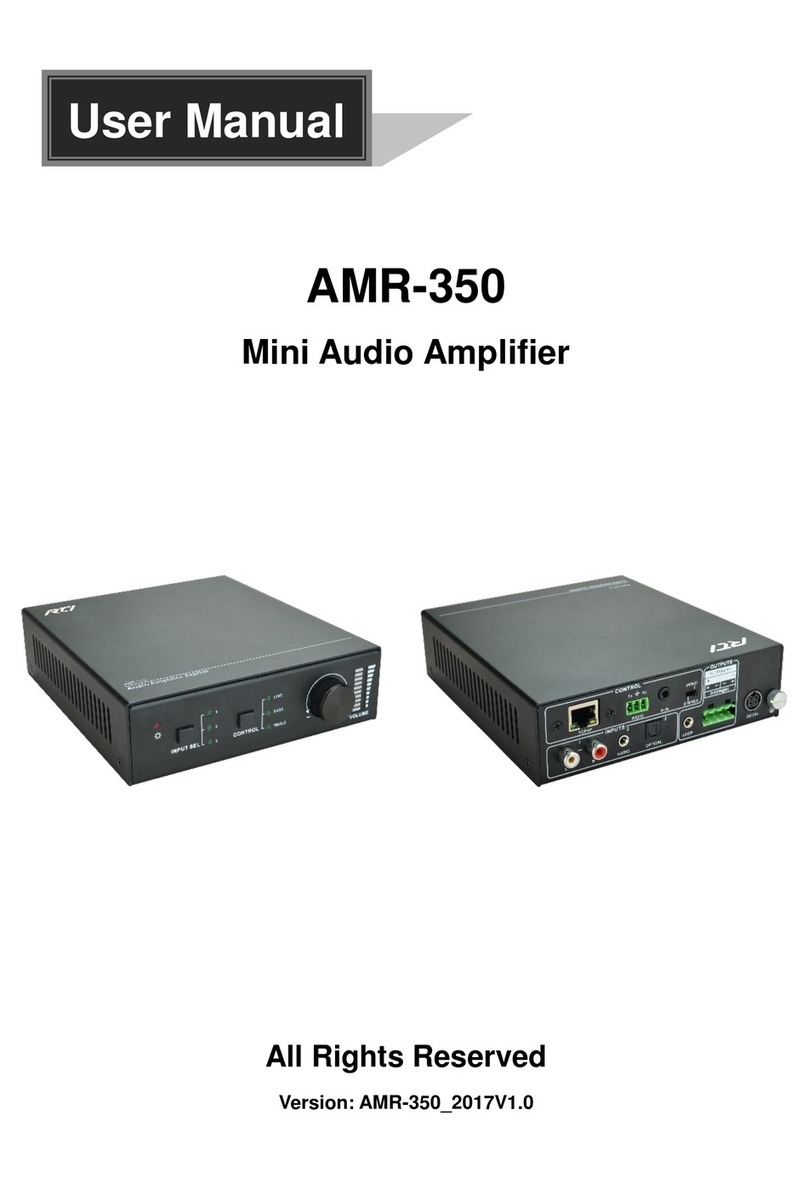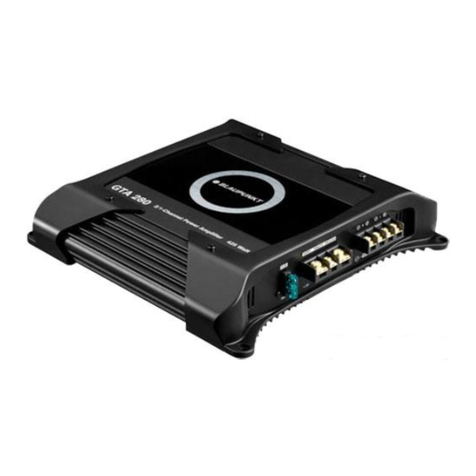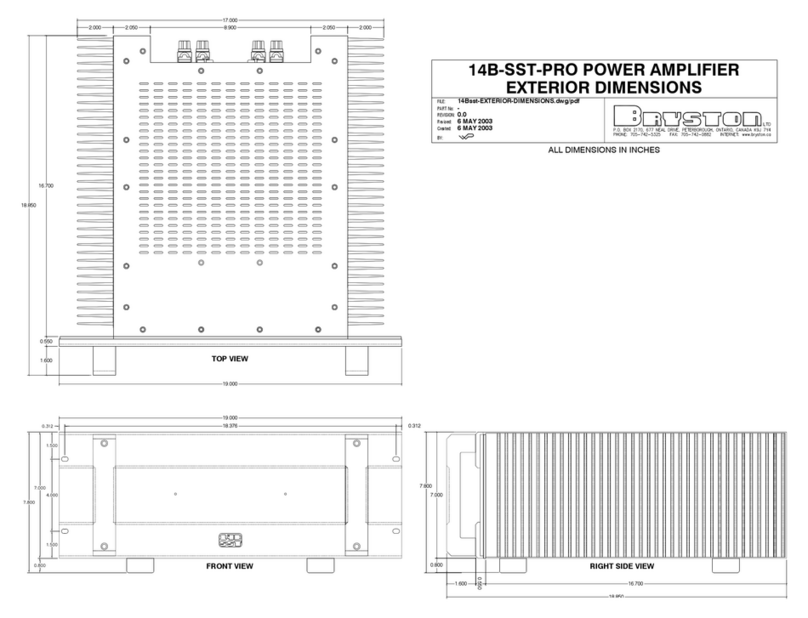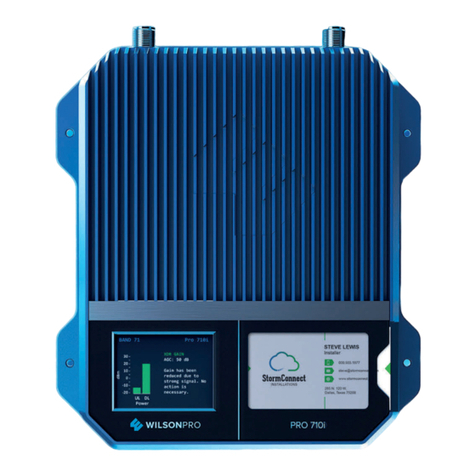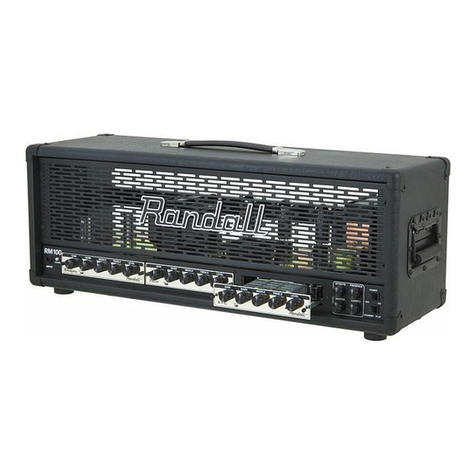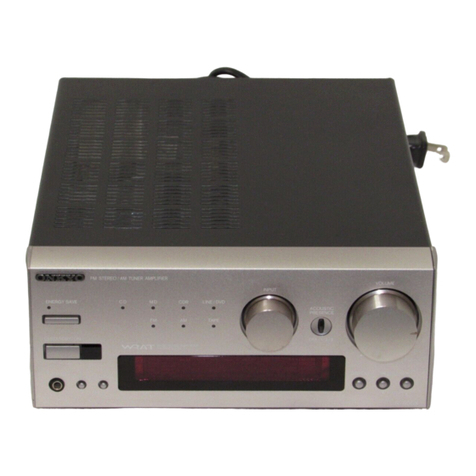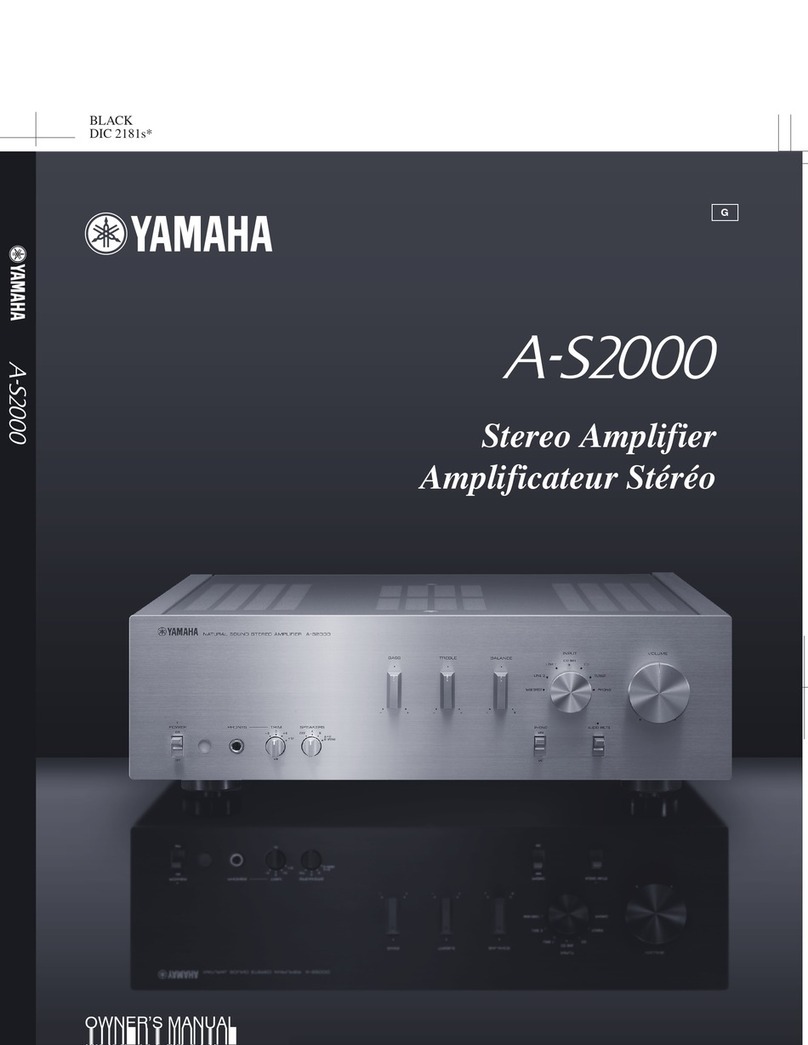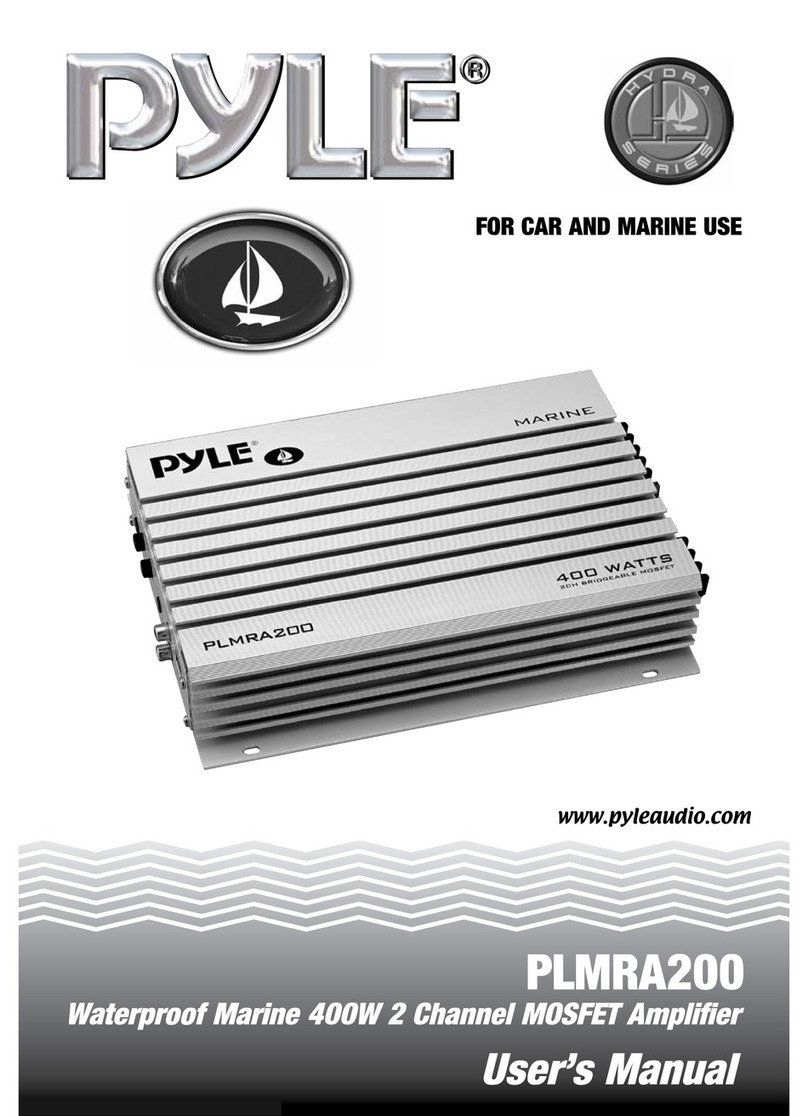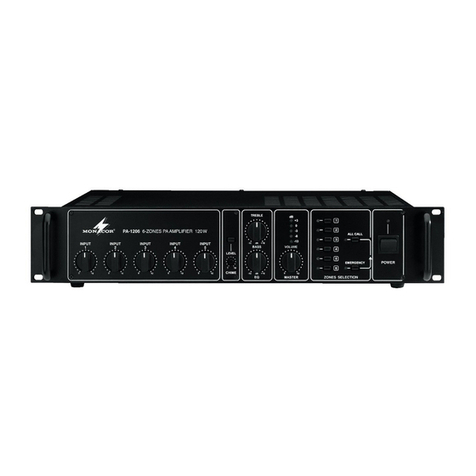SENSY COND-SGA-A User manual

MA-COND SGA-A & SGA-D_EN.docx
Page 1 on 17
Rev: 09/04/2019
COND-SGA-A & COND-SGA-D
STRAIN GAUGE TRANSDUCER AMPLIFIER
1. INTRODUCTION .................................................................................................................................................................................2
1.1. The Strain Gauge Amplifier COND-SGA.....................................................................................................................................2
2. INSTALLATION ...................................................................................................................................................................................3
2.1. Pre-installation.............................................................................................................................................................................3
2.2. Wiring ..........................................................................................................................................................................................3
2.2.1. Power connection................................................................................................................................................................3
2.2.2. Input connection..................................................................................................................................................................4
2.2.3. Output connections .............................................................................................................................................................4
3. SWITCH SETTINGS............................................................................................................................................................................5
3.1. Switch positions...........................................................................................................................................................................5
3.2. Analogue output and excitation voltage - SW4 ...........................................................................................................................5
3.3. Output filter settings - SW3 .........................................................................................................................................................7
3.3.1. Output current mode and input filter - JP1, JP2 & JP3 .......................................................................................................7
3.4. Span (gain) setting switch - SW1 ................................................................................................................................................8
3.4.1. Shunt calibration switch - SW1/8 ........................................................................................................................................9
3.5. Zero (offset) setting switch - SW2 ...............................................................................................................................................9
4. CALIBRATION.....................................................................................................................................................................................9
4.1. Output........................................................................................................................................................................................10
4.2. Zero offset .................................................................................................................................................................................10
4.3. Sensitivity ..................................................................................................................................................................................10
4.3.1. Using a millivolt source .....................................................................................................................................................10
5. TROUBLESHOOTING.......................................................................................................................................................................12
6. PRODUCT CARE..............................................................................................................................................................................13
7. SPECIFICATIONS.............................................................................................................................................................................13
7.1.1. Output options...................................................................................................................................................................14
7.1.2. Connections ......................................................................................................................................................................14
7.1.3. Enclosure ..........................................................................................................................................................................14
7.1.4. Controls.............................................................................................................................................................................14
7.2. CE Approvals ............................................................................................................................................................................14
7.3. SGA/A & SGA/D Connection details .........................................................................................................................................15

MA-COND SGA-A & SGA-D_EN.docx
Page 2 on 17
Rev: 09/04/2019
Rev.
Date
Reason
1
09/04/2019
Text corrections
1. INTRODUCTION
1.1. The Strain Gauge Amplifier COND-SGA
The COND-SGA is a Strain Gauge Amplifier, converting a strain gauge input to a voltage or current output –otherwise known as a
Signal Conditioner.
The COND-SGA provides a wide range of signal conditioning for Strain Gauges, Load Cells, Pressure and Torque transducers.
Offered in two versions, the COND-SGA-A for 110/230 V AC or 18-24 V DC operation and the COND-SGA-D which is DC powered
only.
A further powering option is available; the IS1224 module comprises a DC-DC converter enabling the COND-SGA to be powered
from 9-36 V DC. The ISS1224 can only be fitted to the COND-SGA-D as it occupies the same space as the mains transformer in the
COND-SGA-A. The COND-SGA-A however, is isolated when AC powered by virtue of its mains transformer.
Transducer sensitivity of between 0.1 mV/V and 30 mV/V are possible. This is achieved by a combination of gain (span) DIP
switches and associated fine adjustment by a potentiometer.
Similarly, transducer zero offset and scale dead band of up to 79% can be compensated for in the module. This is achieved again by
a combination of zero DIP switches and associated fine adjustment by a potentiometer.
The module has built-in filters to cancel the field effects of vibration, agitation and electrically noisy environment. The on-board low
pass filter can be switched in and adjusted (from 1Hz to 5kHz) using a series of DIP switches.
A wide range of proportional output options for currents and voltages can be configured by DIP switch settings.
Both the AC and DC versions are based on a common board and are mounted in an IP65 (NEMA 4X) ABS case.
The COND-SGA is a single channel signal conditioner but can supply sufficient excitation current to supply four 350 Ωload cells
connected in parallel. The resulting output is the average of the individual cells.

MA-COND SGA-A & SGA-D_EN.docx
Page 3 on 17
Rev: 09/04/2019
2. INSTALLATION
2.1. Pre-installation
See Specification details in Chapter 8 for details of Environmental Approvals.
Carefully remove the COND-SGA-A unit from its packing. Check that the unit is complete and undamaged.
The COND-SGA-A & COND-SGA-D units can operate in any industrial environment providing the following limits are not exceeded
Operating Temperature
-10 ºC to +50 ºC
Humidity
95% non-condensing
Storage temperature
-20 ºC to +70 ºC
While the unit is sealed to IP65 (NEMA 4X) it is advisable to follow the following installation practice where possible
•Minimise vibration.
•Do not mount next to strong electrical fields (transformers, power cables)
•Ensure easy access to interior of the module
•Install electrical protection device, as the unit is not internally fused.
•Always ensure the lid is properly fitted and all 4 screws tightened.
•Always ensure the cable gland is sealing against the cable to maintain the IP (NEMA) rating.
The 4 screws for the lid are captive and must be tightened to maintain the seal. The 4.5 mm (0.18”) holes for the mounting screws in
the base are directly behind the screws for the lid. The box must not be drilled as this would invalidate the IP rating. Allow sufficient
space at both sides for the cable entry. The Nylon 66 M16 cable glands are designed for ROUND cables. The waterproof entry and
strain relief will seal to a higher rating than the enclosure. Cable diameter should be between 4 mm (0.16”) and 7 mm (0.27”).
2.2. Wiring
2.2.1. Power connection
Two power supply options are available
COND-SGA-A
220/230 VAC, 50/60 Hz
110/120 VAC, 50/60 Hz
5 W Max.
COND-SGA-A & COND-SGA-D
18-24 V DC
5 W (approx. 150 mA fully loaded)
NOTE: The COND-SGA-A can be powered from AC or DC sources whichever is available. It is also possible to connect
BOTH AC and DC simultaneously for security of power supply.

MA-COND SGA-A & SGA-D_EN.docx
Page 4 on 17
Rev: 09/04/2019
Standard mains 2 or 3 core cable PVC sheathed (unshielded) cable will suffice for the power.
NOTE: Connect the appropriate power to the COND-SGA. For AC powering observe the correct transformer jumper
connections as shown above.
To accommodate automotive installations, the COND-SGA can be fitted with an IS1224 module enabling it to be powered from 9 to
36 V DC. This module also has the advantage of electrically isolating the DC power supply from the measurement electronics which
minimises errors and instability due to earth loops in the system.
The power supply should be capable of supplying at least 1 A
for 12 V installations and 0.5 V for 24 V.
Connections to the COND-SGA-A & COND-SGA-D input/output
signal and the power supply are made via 2.5 mm² field terminal
connectors. Cable entry in the cased versions is via glands in
the ends of the case.
2.2.2. Input connection
NOTE: The Ref 5 V / 2.5 V is generated internally and used for calibration.
The cable connecting the sensor to the COND-SGA should be shielded. The cable should have 2 x twin twisted cables, ideally with
each pair individually shielded and with an overall shield.
If possible, segregate the signal cable from Power Cables; allow a 1 meter (3 feet) distance from such cables.
Do not run signal cables parallel to power cables. Cross such cables at right angles.
The ground connection conductor should have enough cross-sectional area to ensure a low impedance path to attenuate RF
interference.
2.2.3. Output connections
Two analogue outputs are available from the COND-SGA, proportional DC current and DC voltage. The ranges available are as
follows:
OUTPUT
RANGE
The DC current support both ‘sink’ and ‘source’ modes of
operation. Two jumpers JP1 & JP2 provide the means of
selecting the desired mode.
DC voltage
±10 V
NB: Maximum Load on
voltage ranges is 2mA
±5 V
0 –10 V
0 - 5V
DC current
4 - 20 mA
NB: Maximum impedance
500R
0 - 20 mA

MA-COND SGA-A & SGA-D_EN.docx
Page 5 on 17
Rev: 09/04/2019
In ‘Sink’ mode the positive end of the load is connected to the internal +15 V supply on the COND-SGA and the negative end is
connected to the COND-SGA output. The current through the load is ‘sunk’ by the COND-SGA towards ground (0 V). In this mode
neither connection to the output load is electrically common to the load cell. Select this option by fitting the two jumpers, JP1 and JP2
to the ‘outside’ positions (See next chapter)
In ‘Source’ mode the positive end of the load is connected to the COND-SGA output and the current is ‘sourced’ by the COND-SGA
output through the load towards ground (0 V). This mode has the advantage that the negative output connection is common to the
load cell ‘- Excitation’ terminal. Select this option by fitting the two jumpers, JP1 and JP2 to the ‘inside’ positions (See next chapter)
See Chapter 3 for switch settings and details of SINK & SOURCE jumpers.
3. SWITCH SETTINGS
3.1. Switch positions
e.g. the first switch on the left of this figure is ’ON’, the second ‘OFF’
3.2. Analogue output and excitation voltage - SW4
Use switch 4 to select the required output and, if
required, the low pass filter and 5V Excitation.

MA-COND SGA-A & SGA-D_EN.docx
Page 6 on 17
Rev: 09/04/2019
INPUT
RANGE
OUTPUT OPTION
4-20 mA
0 –20 mA
4-20 mA
0 –20 mA
0 - 10 V
0 - 5 V
±10 V
±5 V
+ Full Scale
20 mA
20 mA
20 mA
20 mA
10 V
5 V
10 V
5 V
↑
↑
↑
↑
↑
↑
↑
↑
↑
0
4 mA
0 mA
12 mA
10 mA
5 V
2.5 V
0 V
0 V
↓
↓
↓
↓
↓
↓
↓
- Full Scale
n/a
n/a
4 mA Note 1
0 mA Note 1
0 V
0 V
-10 V
-5 V
N.B.: Full scale output on the voltage ranges is achieved with a bi-polar (±) input.
Note 1: Negative inputs can be accommodated on the current (mA) output ranges by setting the ‘Zero’ switch SW2 to +50% and
setting SW1 to twice the required mV/V setting.
SW4
1
2
3
4
5
6
7
8
±10 V
0↓
0↓
0↓
X
X
1↑=Filter in
1↑Filter out
1↑=10 V Exc
0↓=5 V Exc
±5 V
0↓
1↑
0↓
X
X
1↑=Filter in
1↑Filter out
1↑=10 V Exc
0↓=5 V Exc
0-10 V
0↓
1↑
1↑
X
X
1↑=Filter in
1↑Filter out
1↑=10 V Exc
0↓=5 V Exc
0-5 V
1↑
1↑
1↑
X
X
1↑=Filter in
1↑Filter out
1↑=10 V Exc
0↓=5 V Exc
0-20 mA
X
X
X
0↓
0↓
1↑=Filter in
1↑Filter out
1↑=10 V Exc
0↓=5 V Exc
4-20 mA
X
X
X
1↑
1↑
1↑=Filter in
1↑Filter out
1↑=10 V Exc
0↓=5 V Exc
Filter out
X
X
X
X
X
0↓
1↑
1↑=10 V Exc
0↓=5 V Exc
Filter in
X
X
X
X
X
1↑
0↓
1↑=10 V Exc
0↓=5 V Exc
10 V Exc
X
X
X
X
X
1↑=Filter in
1↑=Filter out
1↑
5 V Exc
X
X
X
X
X
1↑=Filter in
1↑=Filter out
0↓
Switch settings (0 = Off 1 = On X = Don’t Care)
Important: Low pass filtering is switched into operation by setting SW4/6 ‘ON’↑ and SW4/7 ‘OFF’↓.
Reverse these settings to bypass the filter.
It should be noted that either one of these switches MUST be on but NOT BOTH

MA-COND SGA-A & SGA-D_EN.docx
Page 7 on 17
Rev: 09/04/2019
Example: - 0-10 Volt output with no filter
required
SW4
1
2
3
4
5
6
7
8
0-10 V
0↓
1↑
1↑
X
X
0↓
1↑
X
3.3. Output filter settings - SW3
The COND-SGA incorporates a second order (-12 dB/oct) low pass filter which can be switched in to improve the performance and
output signal quality in electrically noisy environments. It can also be used to reduce the effects of high frequency fluctuations in the
load or applied force to the load cell.
The cut off frequency of the filter is set by the DIP switch SW3 as illustrated in the table below.
SW3
1
2
3
4
5
6
7
8
1 Hz
0↓
0↓
0↓
0↓
0↓
0↓
1↑
1↑
5 Hz
1↑
0↓
0↓
0↓
0↓
1↑
1↑
1↑
10 Hz
1↑
1↑
0↓
0↓
1↑
1↑
1↑
1↑
50 Hz
1↑
1↑
1↑
1↑
1↑
1↑
1↑
1↑
100 Hz
0↓
0↓
0↓
0↓
0↓
0↓
0↓
0↓
500 Hz
1↑
0↓
0↓
0↓
0↓
1↑
0↓
0↓
800 Hz
See note**
1 kHz
1↑
1↑
0↓
0↓
1↑
1↑
0↓
0↓
5 kHz
1↑
1↑
1↑
1↑
1↑
1↑
0↓
0↓
** Note: A SECONDARY low pass filter, with a cut off frequency of 800 Hz, can be switched into the COND-SGA input by fitting a link
to JP3
Important: Low pass filtering is switched into operation by setting SW4/6 ‘ON’↑ and SW4/7 ‘OFF’↓. Reverse these settings
to bypass the filter. It should be noted that either one of these switches MUST be on but not BOTH
Example: The Switch Settings for a cut-off
frequency of 50 Hz.
Note: SW4/6 must be ‘ON’ and SW4/7 must
be ‘OFF’.
SW3
1
2
3
4
5
6
7
8
50 Hz
1↑
1↑
1↑
1↑
1↑
1↑
1↑
1↑
3.3.1. Output current mode and input filter - JP1, JP2 & JP3

MA-COND SGA-A & SGA-D_EN.docx
Page 8 on 17
Rev: 09/04/2019
3.4. Span (gain) setting switch - SW1
Ranges 1 to 60: from 0.06 mV/V to 30.30 mV/V
↑= ON (1) ↓= OFF (0) SW1/8 switches on the shunt cal. function
1
0.06 mV/V
1
2
3
4
5
6
7
8
↓
↑
↑
↑
↓
↓
↑
x
2
0.11 mV/V
1
2
3
4
5
6
7
8
↑
↓
↑
↑
↓
↓
↑
x
3
0.17 mV/V
1
2
3
4
5
6
7
8
↓
↓
↑
↑
↓
↓
↑
x
4
0.23 mV/V
1
2
3
4
5
6
7
8
↑
↑
↓
↑
↓
↓
↑
x
5
0.28 mV/V
1
2
3
4
5
6
7
8
↓
↑
↓
↑
↓
↓
↑
x
6
0.31 mV/V
1
2
3
4
5
6
7
8
↓
↑
↑
↑
↓
↓
↓
x
7
0.34 mV/V
1
2
3
4
5
6
7
8
↑
↓
↓
↑
↓
↓
↑
x
8
0.39 mV/V
1
2
3
4
5
6
7
8
↓
↓
↓
↑
↓
↓
↑
x
9
0.44 mV/V
1
2
3
4
5
6
7
8
↑
↑
↑
↓
↓
↓
↑
x
10
0.50 mV/V
1
2
3
4
5
6
7
8
↓
↑
↑
↓
↓
↓
↑
x
11
0.55 mV/V
1
2
3
4
5
6
7
8
↑
↓
↑
↓
↓
↓
↑
x
12
0.60 mV/V
1
2
3
4
5
6
7
8
↓
↓
↑
↓
↓
↓
↑
x
13
0.61 mV/V
1
2
3
4
5
6
7
8
↑
↓
↑
↑
↓
↓
↓
x
14
0.65 mV/V
1
2
3
4
5
6
7
8
↑
↑
↓
↓
↓
↓
↑
x
15
0.70 mV/V
1
2
3
4
5
6
7
8
↓
↑
↓
↓
↓
↓
↑
x
16
0.75 mV/V
1
2
3
4
5
6
7
8
↑
↓
↓
↓
↓
↓
↑
x
17
0.75 mV/V
1
2
3
4
5
6
7
8
↓
↑
↑
↑
↑
↑
↑
x
18
0.80 mV/V
1
2
3
4
5
6
7
8
↓
↓
↓
↓
↓
↓
↑
x
19
0.91 mV/V
1
2
3
4
5
6
7
8
↓
↓
↑
↑
↓
↓
↓
x
20
1.20 mV/V
1
2
3
4
5
6
7
8
↑
↑
↓
↑
↓
↓
↓
x
21
1.41 mV/V
1
2
3
4
5
6
7
8
↑
↓
↑
↑
↑
↑
↑
x
22
1.49 mV/V
1
2
3
4
5
6
7
8
↓
↑
↓
↑
↓
↓
↓
x
23
1.78 mV/V
1
2
3
4
5
6
7
8
↑
↓
↓
↑
↓
↓
↓
x
24
1.99 mV/V
1
2
3
4
5
6
7
8
↓
↓
↑
↑
↑
↑
↑
x
25
2.07 mV/V
1
2
3
4
5
6
7
8
↓
↓
↓
↑
↓
↓
↓
x
26
2.35 mV/V
1
2
3
4
5
6
7
8
↑
↑
↑
↓
↓
↓
↓
x
27
2.49 mV/V
1
2
3
4
5
6
7
8
↑
↑
↓
↑
↑
↑
↑
x
28
2.63 mV/V
1
2
3
4
5
6
7
8
↓
↑
↑
↓
↓
↓
↓
x
29
2.91 mV/V
1
2
3
4
5
6
7
8
↑
↓
↑
↓
↓
↓
↓
x
30
2.95 mV/V
1
2
3
4
5
6
7
8
↓
↑
↓
↑
↑
↑
↑
x
31
3.19 mV/V
1
2
3
4
5
6
7
8
↓
↓
↑
↓
↓
↓
↓
x
32
3.35 mV/V
1
2
3
4
5
6
7
8
↑
↓
↓
↑
↑
↑
↑
x
33
3.46 mV/V
1
2
3
4
5
6
7
8
↑
↑
↓
↓
↓
↓
↓
x
34
3.72 mV/V
1
2
3
4
5
6
7
8
↓
↓
↓
↑
↑
↑
↑
x
35
3.73 mV/V
1
2
3
4
5
6
7
8
↓
↑
↓
↓
↓
↓
↓
x
36
4.00 mV/V
1
2
3
4
5
6
7
8
↑
↓
↓
↓
↓
↓
↓
x
37
4.00 mV/V
1
2
3
4
5
6
7
8
↓
↑
↑
↑
↑
↑
↓
x
38
4.05 mV/V
1
2
3
4
5
6
7
8
↑
↑
↑
↓
↑
↑
↑
x
39
4.26 mV/V
1
2
3
4
5
6
7
8
↓
↓
↓
↓
↓
↓
↓
x
40
4.36 mV/V
1
2
3
4
5
6
7
8
↓
↑
↑
↓
↑
↑
↑
x
41
4.63 mV/V
1
2
3
4
5
6
7
8
↑
↓
↑
↓
↑
↑
↑
x
42
4.89 mV/V
1
2
3
4
5
6
7
8
↓
↓
↑
↓
↑
↑
↑
x
43
5.12 mV/V
1
2
3
4
5
6
7
8
↑
↑
↓
↓
↑
↑
↑
x
44
5.34 mV/V
1
2
3
4
5
6
7
8
↓
↑
↓
↓
↑
↑
↑
x
45
5.54 mV/V
1
2
3
4
5
6
7
8
↑
↓
↓
↓
↑
↑
↑
x
46
5.72 mV/V
1
2
3
4
5
6
7
8
↓
↓
↓
↓
↑
↑
↑
x
47
7.50 mV/V
1
2
3
4
5
6
7
8
↑
↓
↑
↑
↑
↑
↓
x
48
10.50 mV/V
1
2
3
4
5
6
7
8
↓
↓
↑
↑
↑
↑
↓
x
49
13.20 mV/V
1
2
3
4
5
6
7
8
↑
↑
↓
↑
↑
↑
↓
x
50
15.60 mV/V
1
2
3
4
5
6
7
8
↓
↑
↓
↑
↑
↑
↓
x
51
17.80 mV/V
1
2
3
4
5
6
7
8
↑
↓
↓
↑
↑
↑
↓
x
52
19.70 mV/V
1
2
3
4
5
6
7
8
↓
↓
↓
↑
↑
↑
↓
x
53
21.50 mV/V
1
2
3
4
5
6
7
8
↑
↑
↑
↓
↑
↑
↓
x
54
23.10 mV/V
1
2
3
4
5
6
7
8
↓
↑
↑
↓
↑
↑
↓
x
55
24.60 mV/V
1
2
3
4
5
6
7
8
↑
↓
↑
↓
↑
↑
↓
x
56
25.60 mV/V
1
2
3
4
5
6
7
8
↓
↓
↑
↓
↑
↑
↓
x
57
27.10 mV/V
1
2
3
4
5
6
7
8
↑
↑
↓
↓
↑
↑
↓
x
58
28.30 mV/V
1
2
3
4
5
6
7
8
↓
↑
↓
↓
↑
↑
↓
x
59
29.30 mV/V
1
2
3
4
5
6
7
8
↑
↓
↓
↓
↑
↑
↓
x
60
30.30 mV/V
1
2
3
4
5
6
7
8
↓
↓
↓
↓
↑
↑
↓
x

MA-COND SGA-A & SGA-D_EN.docx
Page 9 on 17
Rev: 09/04/2019
Please Note: When using 5 V Excitation (SW4 switch 8 = OFF), divide the transducer's mV/V output by two and set SW1 to the
nearest setting shown in the table above.
e.g. for 2.5 mV/V with 5 V excitation choose the 1.2 mV/V setting
Example: A strain gauge has a sensitivity of
2.809 mV /V - Select Switch Setting
number 28 from the table above and fine
tune with potentiometer PI
SW1
1
2
3
4
5
6
7
8
2.63 mV/V
0↓
1↑
1↑
0↓
0↓
0↓
0↓
X
Refer to Chapter 4 for calibration details.
3.4.1. Shunt calibration switch - SW1/8
SW1/8 connects a 120k 50 ppm surface mount resistor across the ‘+Excitation’ and ‘+ Input’ terminals of the COND-SGA. This
shunts one arm of the connected load cell to produce a known change in output which can be used for calibration or checking the
integrity of the load cell and associated wiring.
SW1
1
2
3
4
5
6
7
8
Shunt Cal ON
X
X
X
X
X
X
X
1↑
Shunt Cal OFF
X
X
X
X
X
X
X
0↓
The 120k resistor can be taken out of circuit and replaced by a user defined leaded component
by carefully cutting the fine link as shown in the figure. Use the right hand pad and either of the
left hand pads to fit the new component.
The surface mount resistor can be reinstated by re-connecting the two pads either side of the
cut link.
3.5. Zero (offset) setting switch - SW2
This offset can be used to compensate for the transducer zero error, to tare the scale dead load or to shift the output. These settings
allow the user to calibrate a zero offset. The range allows for up to 78% of the span. Potentiometer P2 provides fine adjustment
(±1.25%, and ±79% for both).
SW2
1
2
3
4
5
6
7
8
%
+Ve Offset
-Ve Offset
40%
20%
10%
5%
2%
1%
Example: An installation has a tare of 15 kg with a 200 kg strain gauge
which gives an output of 6.37 mV/V at 10 V excitation. The tare
equates to 7.5% (15/200). Set the switches to nearest % (5 + 2) and
fine trim with Potentiometer P2. The tare must be subtracted therefore
the ‘-Ve Offset’ switch SW2/2 should be ‘ON’. The calibrated zero mV
reading would be 4.78 mV i.e. 7.5% of 63.7 mV @10 V excitation
SW2
1
2
3
4
5
6
7
8
7.5%
0↓
1↑
0↓
0↓
0↓
1↑
1↑
0↓
Note SW2 /1 & 2 should never be 'ON' together. Either one or other should be 'ON' if an offset is required; otherwise
both switches should be 'OFF'. Switch settings 3 to 8 are ADDITIVE. The offset value of each switch is added to
give a total offset of 78%. Fine adjustment is provided by potentiometer P2 (±1.25%, and ±79% for both).
4. CALIBRATION
The COND-SGA-A & COND-SGA-D provides the excitation supply and signal conditioning to cater for a wide range of strain gauges,
load cells, pressure transducers or torque transducers.

MA-COND SGA-A & SGA-D_EN.docx
Page 10 on 17
Rev: 09/04/2019
4.1. Output
Select the analogue output range as detailed in Chapter 3.2 via SW4.
4.2. Zero offset
Select the offset as detailed in Chapter 3.5 by means of SW2. Having selected the polarity and the offset nearest to that required
with the switches, use the fine potentiometer P2 to achieve the final setting.
4.3. Sensitivity
Select the sensitivity as detailed in Chapter 3.4, by means of SW1. Switches 1-4 of SW1 provide fine setting of the COND-SGA
sensitivity while switches 5-7 give coarse control.
This arrangement allows the COND-SGA to cover a wide range of strain gauge sensitivities without sacrificing stability and ease of
set up. Locate the required sensitivity in the table and set switches 1-7 of SW1 accordingly. Potentiometer P1 provides fine trimming
and range overlap to enable the COND-SGA to be calibrated precisely to any given value within its ranges.
Note If the range is repeated in the table e.g. 4 mV/V (4.0, 4.05 and 4.0 mV/V) choose the setting which has the
greatest number of switches 1-4 set to ‘off’ i.e. SW1 = [1000][000]. This will enable finer trimming to the final
value using potentiometer PI.
The sensitivity settings shown in Chapter 3.4 assume that the load cell is fully loaded. The sensitivity settings can be used to
maximise the output when the full range of the load cell is not being used. Here are a couple of examples.
Example 1 A 2.5 mV/V load cell provides 10 V for an l00 Ib load. However, it is never loaded above 50 lb.
The sensitivity setting can be set to 1.25 mV/V.
1.20 mV/V SW1 = [1101] [000]
Example 2 When a reduced output is required from a fully loaded transducer, use a less sensitive switch setting. For an 8
volt output from a fully loaded 2.5 mV/V load cell use the 3.19 mV/V setting i.e. (10/8x2.5=3.125 mV/V)
1.20 mV/V SW1 = [0010] [000]
The COND-SGA-A & COND-SGA-D can be calibrated with the transducer connected, provided that two calibration points can be
implemented, e.g. by applying known weights or forces. If this is not possible, a stable mV source or load cell simulator can be used
provided that the precise sensitivity (mV/V) and full range output (kg) of the transducer is known. In this case the 'Ref (5V/2.5V)'
output should be connected to 'Strain Input-' and the mV source applied between ‘Strain Input+’ and ‘Strain Input-’.
Actual calibration is carried out in the following way:
1. Set the correct switch settings on SW1 as described above using the transducer's calibration sheet supplied by the
manufacturer. This is normally specified as sensitivity or full range output and should be in mV/V.
2. Apply the known low calibration conditions (weight, force or mV/V: this may be zero if required). Use the fine ‘Zero’ control,
P2 in conjunction with the coarse switches SW2/3-8 and polarity switches SW2/1-2 to set the output in volts or mA to the
required absolute values.
3. Apply the known high calibration conditions (for optimum accuracy this should be at least 75% of full load) Use the fine trim
control, P1, to obtain the required output at the high calibration point.
4. Repeat steps 2 and 3 until the required output is achieved.
4.3.1. Using a millivolt source

MA-COND SGA-A & SGA-D_EN.docx
Page 11 on 17
Rev: 09/04/2019
1. The ‘Ref (5 V/2.5 V)’ should be connected to ‘Strain Input-’ and the mV source applied between ‘Strain Input+’ & ‘Strain
Input-’.
2. Set the correct switch settings on SW1 as described above using the transducer's calibration sheet supplied by the
manufacturer. This is normally specified as sensitivity or full range output and should be in mV/V.
3. Ensure the Zero and Span switch settings are correct, as detailed in Chapter 3
4. Apply the known low calibration conditions and fine adjust P2.
5. Apply the known high calibration conditions and fine adjust P1.
6. Repeat steps 4 and 5 until the required output is achieved.

MA-COND SGA-A & SGA-D_EN.docx
Page 12 on 17
Rev: 09/04/2019
5. TROUBLESHOOTING
1. No output
a. Check power supply is present (LED is on).
b. Check the output connections are correct.
c. Check terminations (ensure insulation is not trapped in terminal, cable break etc.)
d. Check the sensor is connected (typically reading 350 Ωacross Strain Excite + and –and also Strain Input + and
–of J2) with the power off.
e. Check the Excitation voltage (J2) is at 10 V DC
A. For voltage output
a. Check V out+ and V out- terminals are wired
b. Check the load is connected and is not open or short circuited
c. Check SW4 settings are correct for Voltage Output see Chapter 3.
d. Check Span and Zero settings (SW1 and SW2)
B. For current output
a. Check Isink+ and Isink- terminals are used for 'Sink' current output
b. Check Isource+ and Isource- terminals are used for 'Source' current output.
c. Check the load is connected and is not open circuit
d. Check load does not exceed 500 Ω.
e. In 'Sink' mode check 15 V is present at +Ve terminal of load.
f. In 'Source' mode check the -Ve terminal of the load is connected to ground.
g. In 'Sink' mode check the load is isolated from the load cell (sensor) excitation.
h. In 'Source' mode check the -Ve output is common to the -Ve Excitation.
i. Check output SW 4 settings are correct for current see Chapter 3.
j. Check Span and Zero settings (SW1 and SW2) see Chapter 3.
2. Low Output
This is when an output is present but not of sufficient magnitude to meet the required value.
a. Check power supply is within specified limits (i.e. is not low)
b. Check the sensor is connected (typically reading 350 Ωacross Strain Excite + and –and also Strain Input + and
–of J2) with the power off.
c. Check the Excitation voltage (J2) is at 10 V DC
d. Check the calibration. Incorrect setting of the calibration Span switches are the most common cause of low
output - particularly when associated with ± Voltage outputs. Refer to the calibration instructions in Chapter 4.
Refer to tutorial on the calibration set-up.
e. Check the Zero (offset) is correct for the sensor. This too is a common reason for low outputs.
3. High output
This is when an output is present but higher (in span or zero) than required.
a. Check the sensor is connected (typically reading 350 Ωacross Strain Excite + and –and also Strain Input + and
–of J2) with the power off.
b. Check the Excitation voltage (J2) is at 10 V DC
c. Check the Zero (offset) is correct for the sensor. This is a common reason for high outputs where the offset is
either omitted or incorrect for the sensor. Refer to the calibration instructions in Chapter 4. Refer to tutorial on the
calibration set-up
d. Check the calibration. Incorrect setting of the calibration span switches is the most common cause of high output
- particularly when associated with ± Voltage outputs.
4. Unstable Output
This is when the output is unstable or varies. The cause could be (A) poor installation or (B) a noisy environment.
A. Poor Installation
This is when an output is present but higher or lower (in span or zero) than expected:
a. Check the installation for problems and repair where necessary
b. Poor termination
c. High resistance on cable leads
d. Low insulation impedance
e. Proximity to High Voltage Equipment –Transformers, Contactors, Motors etc.

MA-COND SGA-A & SGA-D_EN.docx
Page 13 on 17
Rev: 09/04/2019
B. Noisy Environment
a. Check if the source can be found and remove noise
b. Check the cable shielding and ensure it is correctly installed and terminated
5. Calibration
This section assumes that the unit is providing an output that is not stuck at top or bottom of the scale. (See paragraphs 1 to 4 if
this is the case)
a. Ensure you have the calibration set-up correctly installed i.e. mV source and output as required.
b. Ensure you are connected to the correct sensor and not to another adjacent unit.
c. Ensure you have the correct calibration data from the sensor manufacturer.
d. Ensure the temperature and other environmental parameters are within specification and where necessary taken
into account when calibrating.
6. Fine Span (Gain) and Zero (Offset) Adjustment Problems
a. If the adjustment cannot reach the maximum output desired then, check the tare is not too high.
b. If the potentiometer does not alter the output the unit must be repaired –remove from service.
c. It is always wise to check a known good COND-SGA against the problem installation before rejecting the suspect
COND-SGA.
6. PRODUCT CARE
In the unlikely event you have problems with the COND-SGA module we would advise that you take the following precautions:
•The unit is installed as instructed.
•Recommended spares are kept in stock. We can assist.
•Sufficient expertise available for first line maintenance.
•Routine maintenance checks are performed –annually is recommended.
•The necessary documentation for the product is available to the maintenance personnel.
We recommend you keep on file –as a minimum
•This Manual
•The settings of the switches and links on the COND-SGA card
•The calibration figures for the attached sensors
•The instrument loop to which the output is connected
•A record of the ‘normal’ output – if applicable
•A maintenance record of the COND-SGA
•A contact phone number from the supplier for assistance
7. SPECIFICATIONS
PARAMETER
MIN
TYPICAL
MAX
UNITS
Power supply
COND-SGA-A
110/230 (50 –60 Hz)
V AC
COND-SGA-D
18
24
VDC (See note 1)
Current dc (depends on loading)
50
90
200
mA
Rejection gain (0 - 100%)
0.01
%FR
Rejection offset (0 - 100%)
0.01
%FR
Bridge
Excitation 10 V range
9.75
10
10.25
V (See note 2)
Excitation 5 V range
4.85
5 5
15
V (See note 2)
Impedance
85
Ohms (See note 3)
Sensitivity (Switchable)
0.06
30
mV/V
Gain adjustment
Pot - fine adj.
0.06
1.0
mV/V
Offset adjustment
Pot - fine adj.
0
±1.25
%FR
Switchable - coarse adj.
±1.25
±79
%FR
Output load
Voltage output
2
mA
Current output
0
500
Ohms
Stability gain (0 - 100%)
0.01
%FR

MA-COND SGA-A & SGA-D_EN.docx
Page 14 on 17
Rev: 09/04/2019
PARAMETER
MIN
TYPICAL
MAX
UNITS
Stability offset (0 - 100%)
0.01
%FR
Bandwidth (No filter and > 2 mV/V)
DC
6
kHz
Filter cut-off (Switchable ranges)
1
5000
Hz
Temperature coefficient
Zero (@2.5 mV/V)
0.002
0.009
%/ºC@ 2.5mV/V FR
Span
0.007
0.01
%/ºC
Linearity
0.03
%FR
Gain stability
1st 1000 Hours
0.2
%FR
2nd 1000 Hours
0.1
FR
90 day Offset stability
3.3
µV
Temperature range
Operating
-10
50
ºC
Storage
-20
70
ºC
Humidity
95
%
Note 1: 18V max at full load (four 350 ΩLoad Cells connected in parallel @ 10 V excitation)
Note 2: Switch SW4/8 on for 10 V excitation, off for 5V excitation
Note 3: Four 350 ΩLoad Cells connected in parallel @ 10 V excitation
7.1.1. Output options
±10 V, ±5 V, 0-10 V, 0-5 V, 0-20 mA, 4-20 mA
7.1.2. Connections
Field screw terminals - 2.5 mm² rising clamp.
7.1.3. Enclosure
ABS case 160 x 80 x 55 sealed to IP65 fitted with 3 off cable glands.
7.1.4. Controls
Gain pot
Offset pot
Coarse gain switches
Coarse offset switches
Filter cut-off switches
Output mode switch
7.2. CE Approvals
European EMC Directive
2004/108/EC
BS EN 61326-1:2006
BS EN 61326-2-3:2006
Low Voltage Directive
2006/95/EC
BS EN 61010-1:2001
Rated for Basic Insulation
Normal Condition
Pollution Degree 2
Permanently Connected
Insulation Category lll
In the interests of continued product development, SENSY S.A. reserves the right to alter product
specifications without prior notice.
For more Manuals, Quickstarts, Datasheets, support, and many others, visit us on
www.sensy.com/support

MA-COND SGA-A & SGA-D_EN.docx
Page 15 on 17
Rev: 09/04/2019
7.3. SGA/A & SGA/D Connection details

J1J1 J2J2
J3J3 OROR
Terminals
STANDARD DIMENSIONS
COND-SGA-A >
Dimensions in mm
Rev. 11/06/2018
TECHNICAL DRAWINGS: CONDITIONERS - AMPLIFIERS FOR STRAIN-GAUGE BASED TRANSDUCERS

J1J1 J2J2
Terminals
Dimensions in mm
Rev. 11/06/2018
STANDARD DIMENSIONS
COND-SGA-D >
TECHNICAL DRAWINGS: CONDITIONERS - AMPLIFIERS FOR STRAIN-GAUGE BASED TRANSDUCERS
Other manuals for COND-SGA-A
1
This manual suits for next models
1
Table of contents
Other SENSY Amplifier manuals

